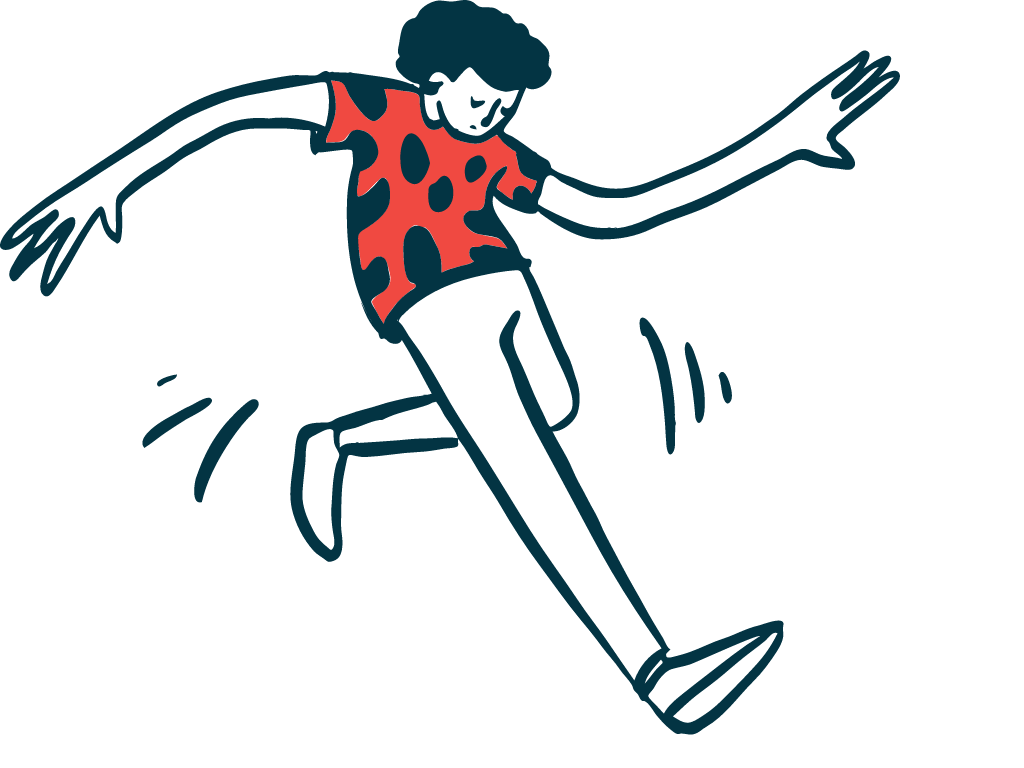Hypermobility a factor in impaired walking ability in EB children: Study
Review aims to shed light on 'phenomenon' seen to impact all EB subtypes

The presence of loose joints, or hypermobility, contributes to the impaired walking ability seen in many children with epidermolysis bullosa (EB), a new review study reports.
Researchers at a U.K. hospital found that 48 children of 59 referred for physiotherapy had an altered gait pattern, meaning their walking ability was impaired. Among these children, about two-thirds had hypermobility. In a subsequent historical assessment, “it became evident that a significant proportion of the EB population occasionally exhibits altered gait pattern,” the team noted.
“This observation highlighted a previously unnoticed trend: a substantial percentage of our EB population, across all subtypes, displays hypermobility, a phenomenon that has not been widely reported in existing literature,” the researchers wrote.
The team suggested that the use of orthotics and supportive footwear “should be considered to improve foot posture, promote efficiency of the gait [walk] pattern and ultimately improve functional mobility.”
The study, “Hypermobility in patients with epidermolysis bullosa — A retrospective observational study from a national referral center,” was published in the journal JEADV Clinical Practice.
Researchers seek to raise awareness of hypermobility in EB and its effects
EB causes the skin to become fragile and blister or tear easily, which can affect any part of the body. Associated with chronic pain and itching, this group of rare skin disorders can affect patients’ mobility and quality of life.
However, whether children with EB develop hypermobility, and if that leads to impaired walking ability, remains scarcely investigated.
“In the literature, there appears to be little evidence surrounding the incidence of hypermobility in children with EB and the subsequent effect on gait patterns,” the researchers wrote.
To address this knowledge gap, a team from the Great Ormond Street Hospital NHS Foundation Trust, in the U.K., analyzed data from children with EB with alterations in walking.
The children were followed between 2009 and 2022. Altered gait was assessed in physiotherapy sessions using GAITRite, an equipment harnessed with a software for real-time gait analysis while the patient walks on a mat.
Specifically, the analysis focused on total contact area of foot and floor, areas of decreased force, gait velocity, and step length.
In total, the scientists analyzed data from 48 children — 54% of them girls — with EB and alterations in their walking. Among the children, 23 had recessive dystrophic epidermolysis bullosa (DEB), 17 had epidermolysis bullosa simplex (EBS), five had junctional epidermolysis bullosa (JEB), and three had dominant DEB.
The impairments in walking were characterized by altered contact of the foot with the floor in 63%, and by a short shuffling with high cadence — the number of steps taken per minute — and decreased single support in 42%. Toe walking was seen in 6% of the children.
During the single support phase of gait, one leg is on the ground and the other is experiencing a swinging motion.
Hypermobility was detected in 67% of the children, according to the Beighton scoring system. This included all children with JEB, 88% of those with EBS, 67% of children with dominant DEB, and 43% of the group with recessive DEB.
We provide the first accurate data for the causes of altered gait patterns in children with EB. Healthcare professionals should be aware of joint hypermobility and its effect on gait in this patient cohort.
A high percentage of patients with hypermobility had a pronated foot, when the foot rolls inward with each step. Almost one quarter of the participants (23%) wore orthotic footwear, which was well tolerated.
All EB groups showed a reduction in velocity when compared with age-matched children, along with asymmetrical step length.
“We provide the first accurate data for the causes of altered gait patterns in children with EB. Healthcare professionals should be aware of joint hypermobility and its effect on gait in this patient cohort,” the researchers concluded.







